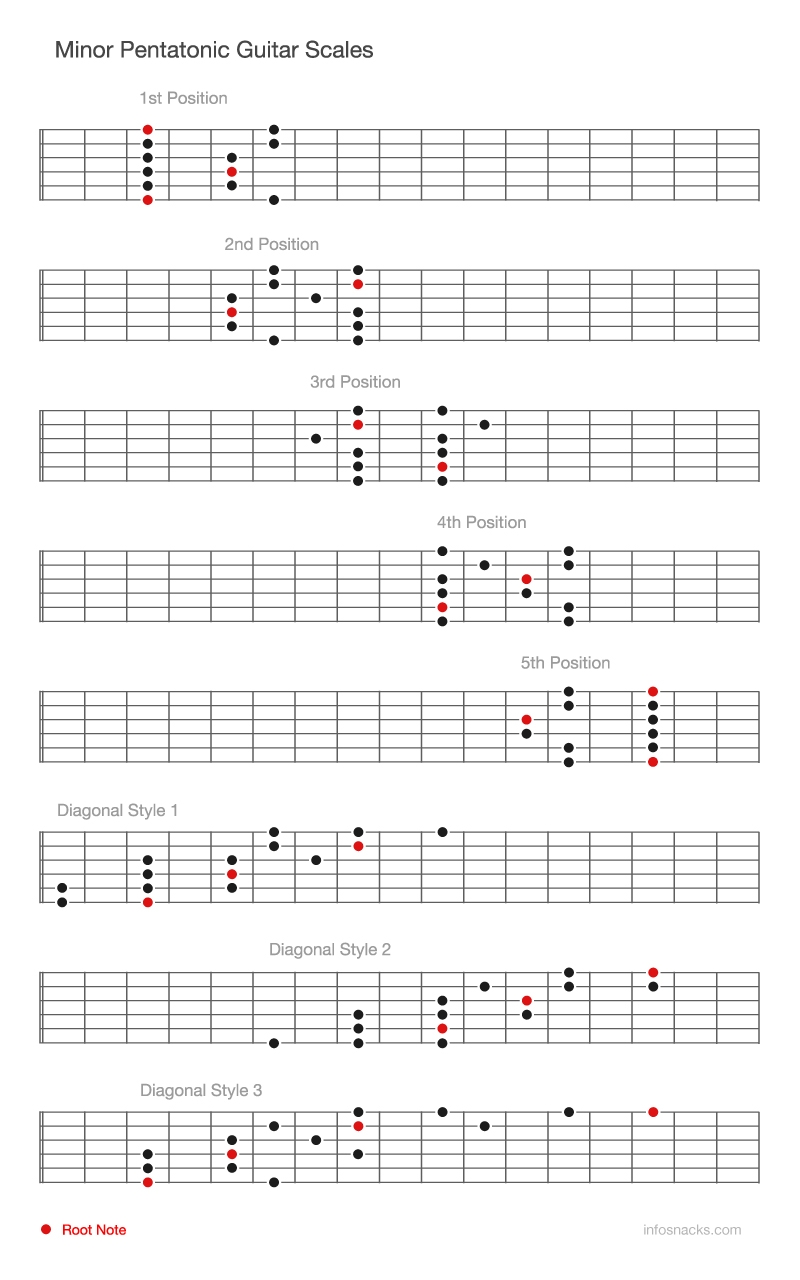Minor Pentatonic Guitar Scales
Countless famous guitar solos are based on the pentatonic scale, either strictly or loosely. The 1st position of the minor pentatonic guitar scale is the first scale pattern that most guitarists learn. This is because it is pretty simple, easy to remember, and sounds pleasing to the ear without much effort. Practicing pentatonic scales is a great way for new guitarists to build finger strength and dexterity. Improvising on the pentatonic scales is a fun and creative way to memorize them (bonus if you practice to a metronome).
Pentatonic scales have exactly five notes in the octave and are made up of thirds and whole steps. The scale contains the 1st, 3rd, 4th, 5th, and 7th scale degrees. The simplest way to play the pentatonic scales on guitar is with two notes per string, but they can also be played as a combination of two and three notes per string, on a dedicated set of two strings, or on a single string.
In the chart below you can see how the five positions lock into each other, meaning exactly half of the notes of each position are also included in the following position. For example, all of the right notes in 1st position are identical to the left notes in 2nd position. This pattern includes the last (5th) position locking into the 1st as the guitar neck repeats at a higher octave.

Comments